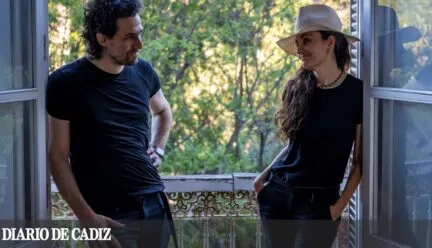Lecture: Building and Dwelling
Peris-Toral Lecture (Award-winning firm from Barcelona)
Reception in Temple Buell Hall Atrium beginning at 5:30PM.
Lecture in Temple Buell Hall Plym Auditorium Room 134 at 6PM.
Lecture
The conference “Building and Dwelling” aims to explain how the firm PERIS+TORAL ARQUITECTES approaches architectural creation through its social housing projects, considering the current challenges of the climate and housing emergencies. In this context, architecture is approached from a perspective of comprehensive sustainability, where environmental, economic, and social aspects are interrelated, in order to offer efficient and sustainable architectural solutions for current and future needs.
When considering how to create sustainable architecture, three fundamental aspects of comprehensive sustainability are identified: environmental, economic, and social sustainability. The challenge is not to focus solely on each aspect in isolation but to explore the points of intersection between them to find effective strategies that simultaneously address social, environmental, and economic challenges. This is because what is environmentally sustainable may not be economically viable, what is economically viable may not be socially equal, and what is socially just may not be environmentally bearable. Only when a project is viable, equitable, and bearable can we speak of a truly sustainable project.
To achieve an environmentally bearable architecture, which is interpreted as sustainable from both environmental and social viewpoints, the strategy of SPACING through courtyards and atriums is proposed. These are thermodynamical and bioclimatic spaces that can play a vital role in the thermal regulation of buildings. Functioning as thermal buffer zones and solar collectors, these spaces can reduce dependence on mechanical heating and air conditioning systems, leading to energy savings and a decrease in greenhouse gas emissions. Moreover, these intermediate spaces, strategically linked to the building’s circulation, become meeting places and can foster social interaction.
To achieve viability, which implies both economic and environmental sustainability, a fundamental strategy is to REDUCE. This principle constitutes the first and essential step of the three R’s rule: Reduce, Reuse, Recycle. This strategy leads to the need for fewer resources, less energy, and less waste, which in turn implies lower costs. The philosophy is to achieve more with less: exploring construction solutions without cladding, requiring fewer layers, less thickness, and less weight. Reducing the amount of materials, layers, and thicknesses not only means a reduction in emissions—thus being environmentally sustainable—but also means a reduction in costs, making it economically viable.
To achieve a socially equitable architecture, the strategy will consist of SHARING. It involves applying the strategies of the collaborative economy to architecture. By sharing spaces, we can achieve that by constructing a single space, it serves all users instead of having to repeat it in each private unit. It’s about learning to share at different scales; this not only results in greater economic efficiency but also promotes the creation of spaces that enhance social relationships within the community.
Sharing, Reducing, and spacing are the three strategies that articulate the discourse through the latest public housing projects, located mainly in Catalonia and the Balearic Islands.
